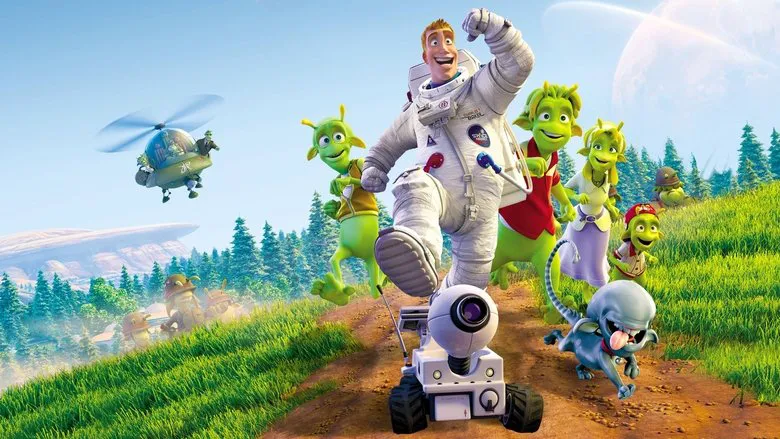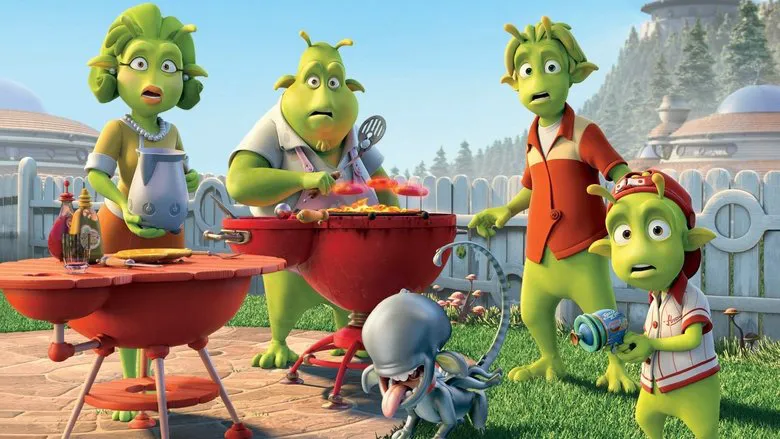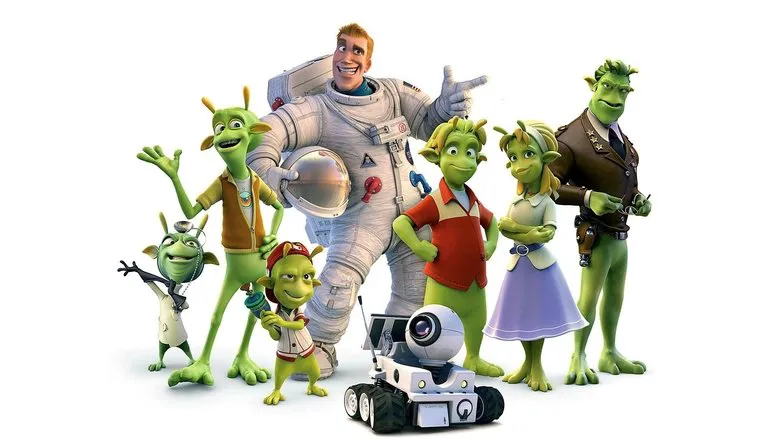
A NASA space module crash-lands practically on top of some green aliens who are having a barbecue in their yard. A large white man emerges from the module in a stiff spacesuit, plants a star-spangled banner on the lawn, quickly realizes the awkwardness of the situation, jumps over the fence, and spends the next hour and a half trying to escape the aliens by running away. Lem, a teenage alien and employee of the local observatory who didn’t believe in aliens, helps the man in the spacesuit return to his ship. Hindering him is the local military administration, embodied by a patriotic general who is convinced that the aliens want to zombify the planet’s population. Watching both sides are Skiff, a teenager; Neera, a green girl and “Miss Planet” pageant winner; and Professor Skipple, who dreams of acquiring a human brain for experiments.

Let’s be honest, the premise of a NASA lunar module mistakenly landing on a green alien’s lawn would be enough to carry a good full-length story. But the creators of “Planet 51,” like NASA astronauts, don’t take the easy route. Ever since Bradbury’s “The Martian Chronicles,” the theme of Earthlings switching roles with aliens resurfaces whenever the American nation begins to feel minor pangs of conscience towards the rest of the world. The little green people of Planet 51 are a good and appropriate warm-up act for the big blue ones from Cameron’s “Avatar.” It’s especially fitting because these little green people don’t live in a jungle, but on a planet that parodies Eisenhower-era America. In other words, American astronauts have to escape on other planets from a parody of themselves projected into space, which preemptively reconciles us with how the blue people will be treated in Cameron’s film.

The Retro-Futuristic Charm of Planet 51
The correct observation that extraterrestrial intelligence should look exactly like the good old American trash of the 50s about flying saucers is perhaps the main artistic achievement of this film. The retro-futuristic United States populated by green humanoids is drawn here with great love for the spirit of the time and its details. We won’t go into details, especially since most of them are easier to examine on “pause,” and cinemas don’t offer that option yet.
Details and Quirks
However, in addition to round televisions and bowling balls in the shape of Saturn, there are also some rather extreme solutions, such as a “meteor shower” taken too literally, when stones begin to fall from the clouds onto the heads of the little green people. Or the local dachshund with the jaws of an alien, dissolving a roadside pole with sulfuric acid.
Storyline Shortcomings
Unfortunately, the plot doesn’t deserve the same compliments. Director Jorge Blanco, primarily an artist, isn’t much of a storyteller. The trajectory of the white man in the stiff spacesuit is predictable from the first frames, and most of the jokes created for him seem like a forced product of a collective brainstorming session by well-paid American screenwriters, although only one is credited – Joe Stillman, the inventor of Shrek, by the way.
The fact that even aliens will look like Americans is, more or less, amusing. But the fact that Spanish animators, when given money, became like Hollywood animators is rather sad. But only adults know about this, right?